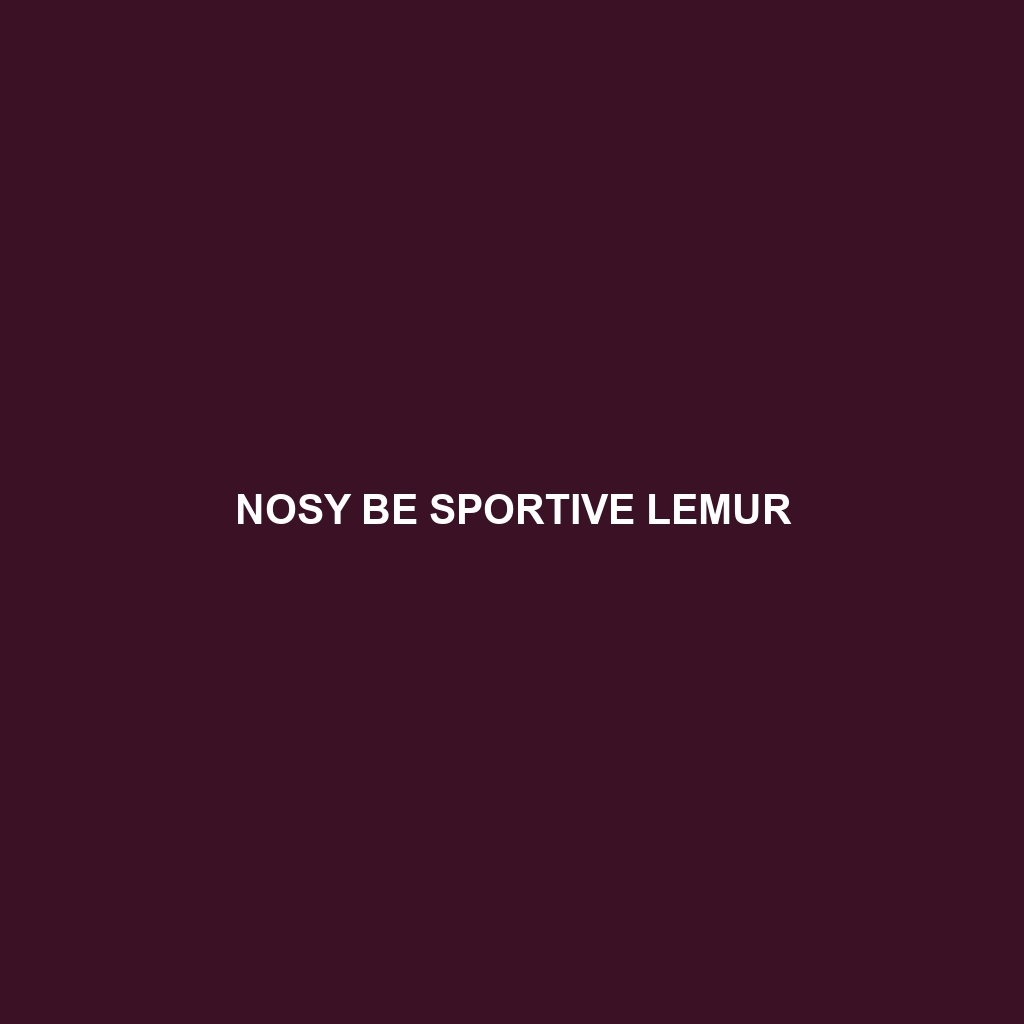Nosy Be Sportive Lemur
Common Name: Nosy Be Sportive Lemur
Scientific Name: Lepilemur septentrionalis
Habitat
The Nosy Be Sportive Lemur is primarily found on Nosy Be Island, located off the northwest coast of Madagascar. This species thrives in tropical forests, particularly in areas with dense vegetation, which provide the necessary cover and food sources. The warm, humid climate of Nosy Be creates an ideal habitat for these lemurs, allowing them to navigate through trees with ease.
Physical Characteristics
Nosy Be Sportive Lemurs are medium-sized primates, typically weighing between 1.5 to 2.5 kg. They exhibit a distinctive coat of fur ranging from gray to brown, often with lighter underbellies. Their large, reflective eyes allow for excellent night vision, a feature crucial for their nocturnal lifestyle. One remarkable characteristic is their long, strong tail, which aids in balancing as they navigate their arboreal environment.
Behavior
This species is predominantly nocturnal, engaging in activities such as foraging for food and socializing during the night. Nosy Be Sportive Lemurs are known for their solitary nature but can occasionally be found in small family groups. They communicate using a series of vocalizations, including whistles and barks, which are essential for maintaining social bonds and signaling potential threats.
Diet
The Nosy Be Sportive Lemur primarily feeds on leaves, fruits, flowers, and occasionally insects. Their diet is highly influenced by seasonal availability, with a preference for young leaves from a variety of tree species. This folivorous diet requires a specialized digestive system to break down tough plant material, making them vital for the health of their forest ecosystem.
Reproduction
Breeding for the Nosy Be Sportive Lemur typically occurs during the wet season, with females giving birth to a single offspring after a gestation period of approximately 120 days. The young are born altricial and require significant care from their mothers. Mating rituals include vocalizations and displays of affection as part of their bonding process.
Conservation Status
Currently classified as vulnerable, the Nosy Be Sportive Lemur faces several threats, including habitat destruction due to logging and agricultural expansion. Conservation efforts are critical to prevent further decline in their population and to protect their natural habitat on Nosy Be Island.
Interesting Facts
One fascinating aspect of the Nosy Be Sportive Lemur is its ability to leap up to 10 meters between trees, showcasing exceptional agility. Additionally, they have a unique adaptation that allows them to digest cellulose from leaves more efficiently than many other primates, highlighting their evolutionary specialization.
Role in Ecosystem
The Nosy Be Sportive Lemur plays a crucial role in its ecosystem as a seed disperser. By consuming fruits and excreting the seeds throughout their forest habitat, they contribute to the growth and regeneration of various plant species, promoting biodiversity and maintaining the health of their tropical environment.
